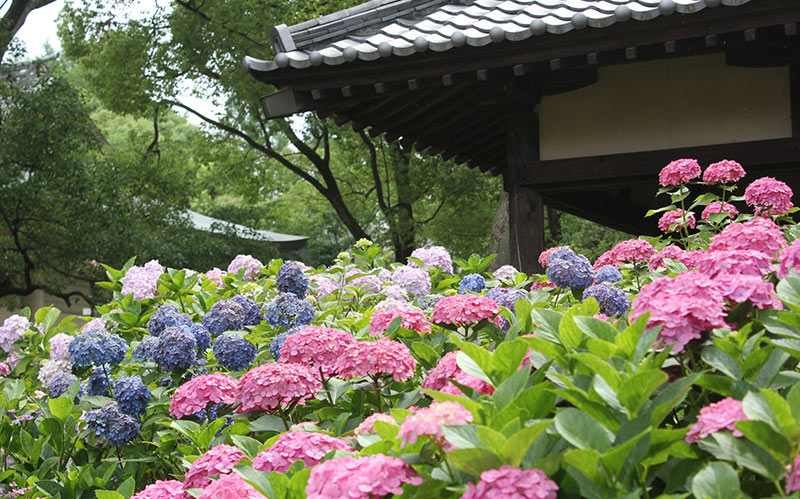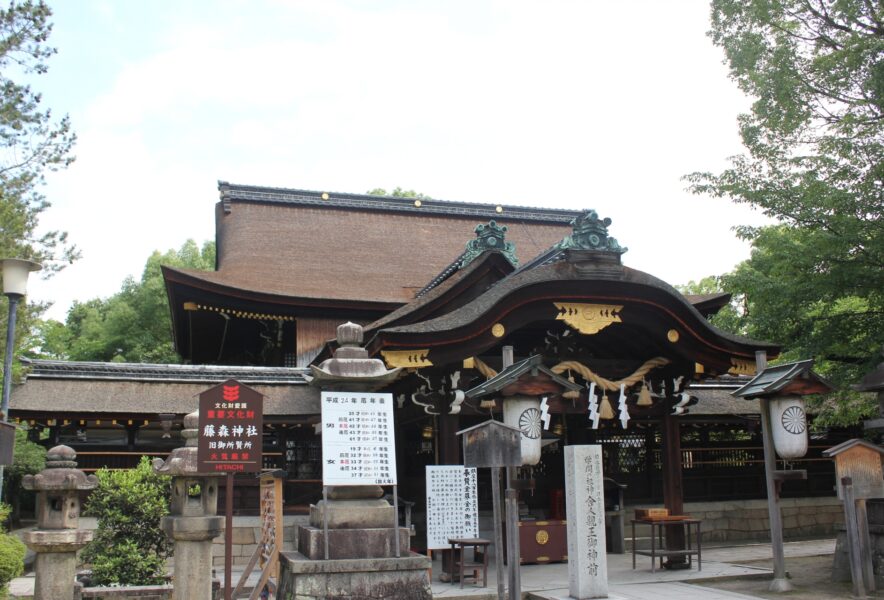Fujinomorijinjya Shrine is a historic shrine founded by Empress Jingu about 1,800 years ago.
Since three nearby shrines were enshrined together, the shrine enshrines as many as 12 deities.
The shrine is known as the “god of learning” because it enshrines “Prince Toneri Shin’o,” the compiler of the Nihonshoki and said to be the first scholar in Japan.
The shrine is also known as the birthplace of the “Iris Festival,” and is worshipped as a god of victory and luck because the word “iris” is linked to “Shobu” and “Kacho,” or victory, and as a “horse shrine” because of the running horse ritual dedicated at the Fujimori Festival.
Many kinds of red seals are available, and you can even get a limited edition red seal.
Original good luck charms and cute omikuji (omikuji fortune) drawn by horses are also popular.
- The powerful “Fujimori Festival’s cantering horse ritual” in which people and horses are united as one
- Tastefully connected to alcohol? Why don’t you try “Fuji-no-Mizu”?
- Enjoy the beautiful “Hydrangea Garden” even in the rain.
- The “Treasure House,” with its mixture of various collections, is well worth seeing.
- When it comes to horses and games, “Kyoto Racecourse” is the place to be. Why not go there?
- Access to Fujinomorijinjya Shrine
- Parking around Fujinomorijinjya Shrine
- Fujinomorijinjya Shrine Official Website
- Recommended around Fujinomorijinjya Shrine
The powerful “Fujimori Festival’s cantering horse ritual” in which people and horses are united as one
It is said that May 5 was the day in 781, about 1,200 years ago, when Emperor Kanmu’s younger brother, Prince Sawara, prayed as he set out for battle as a general to conquer and defeat the rebellion in the Mutsu region.
Since the Muromachi period (1333-1573), warriors and townspeople competed with each other in the art of horseback riding.
Nowadays, seven different techniques are performed, including writing a single character on the horse and riding sideways while hiding from the enemy.
The horses gallop at full speed from the south gate to the hall of worship.
Tastefully connected to alcohol? Why don’t you try “Fuji-no-Mizu”?
There is a spring named after the name of the water, which means that it is a unique and delicious water.
It has run dry twice in the past, and now it is the third spring water that gushes out from 90 meters below the ground.
Even in summer, the water is so cold that the container in which it is drawn becomes cloudy.
The water is so cold that the container in which it is drawn gets fogged up even in summer.
The water is said to be beneficial for luck in victory and study, so many people take it home with them.
Enjoy the beautiful “Hydrangea Garden” even in the rain.
The shrine is also famous for its beautiful hydrangea blossoms, and the “Hydrangea Festival” is held in June, attracting many visitors.
In June, visitors can obtain a “hydrangea version” red seal.

The “Treasure House,” with its mixture of various collections, is well worth seeing.
The museum’s permanent collection of about 100 items is centered on the shrine’s armory, including armor, swords, large swords, bows, firearms, and other weapons.
Materials on the history and culture of the shrine are also on display, as well as Wakizashi, a tea ceremony utensil used by samurai, and Kougai, a hair dressing set from the Edo period.
Since ancient times, there has been a spiritual culture that regards swords not only as “weapons” but also as “sacred vessels” in which souls dwell. The real “Tsurumaru” was made in various ways.
The real “Tsurumaru” passed through the hands of various warlords, and was presented to Emperor Meiji by the 14th lord of the domain, Date Munemoto, and now a copy of the “Tsurumaru” is dedicated by the swordsmith Fujiyasu Shohei.
As a shrine related to “Tsurumaru Kuninaga” of “Sword Dance” fame, related character goods and domestic and foreign folk art and collections with horse motifs are also on display.
It is well worth a visit.
When it comes to horses and games, “Kyoto Racecourse” is the place to be. Why not go there?
There are facilities and events for families and couples to enjoy, as well as a variety of things to see and do, such as interacting with horses.
The number of races held at Kyoto Racecourse is about four months a year, but there are many major prize-winning races, and the number of female fans is increasing due to TV commercials.
There are many events for children and for women, and even when there is no race, the track is still a great place to enjoy itself.
Located on the Keihan main line and not far from Fujimori Shrine, how about asking for a favor and buying a ticket for a horse to “test your luck” with the blessing?
Access to Fujinomorijinjya Shrine
609 Fukakusa Toriizaki-cho, Fushimi-ku, Kyoto 612-0864
Parking around Fujinomorijinjya Shrine
Fujinomorijinjya Shrine Official Website
Official site:http://www.fujinomorijinjya.or.jp
